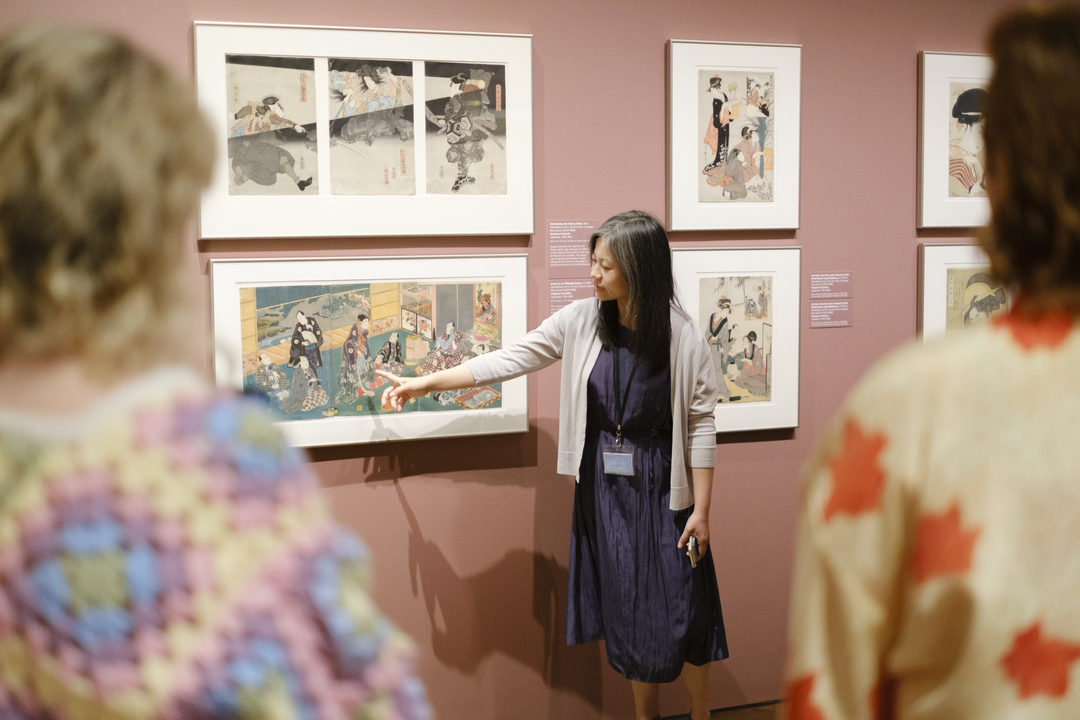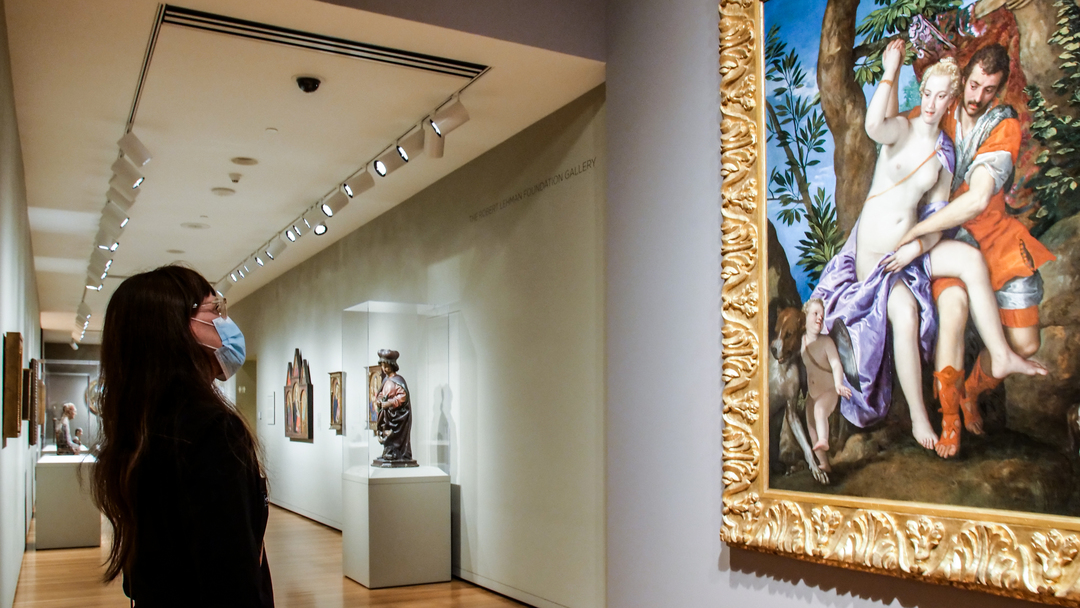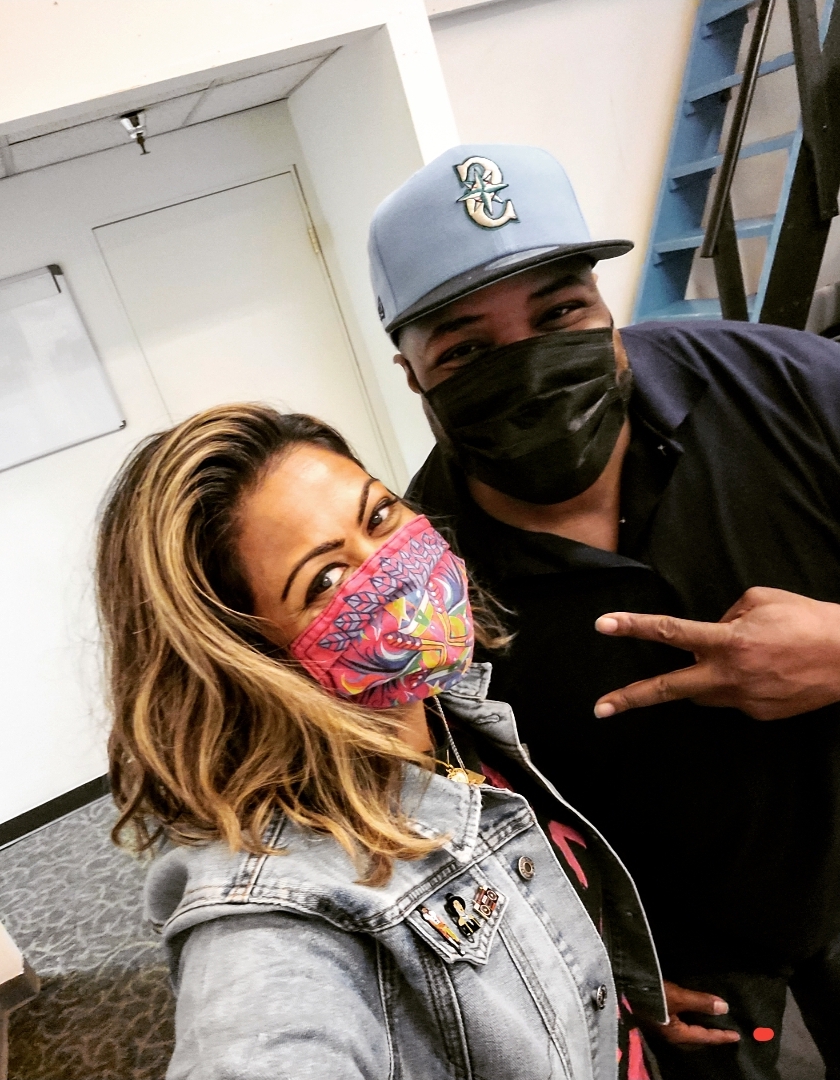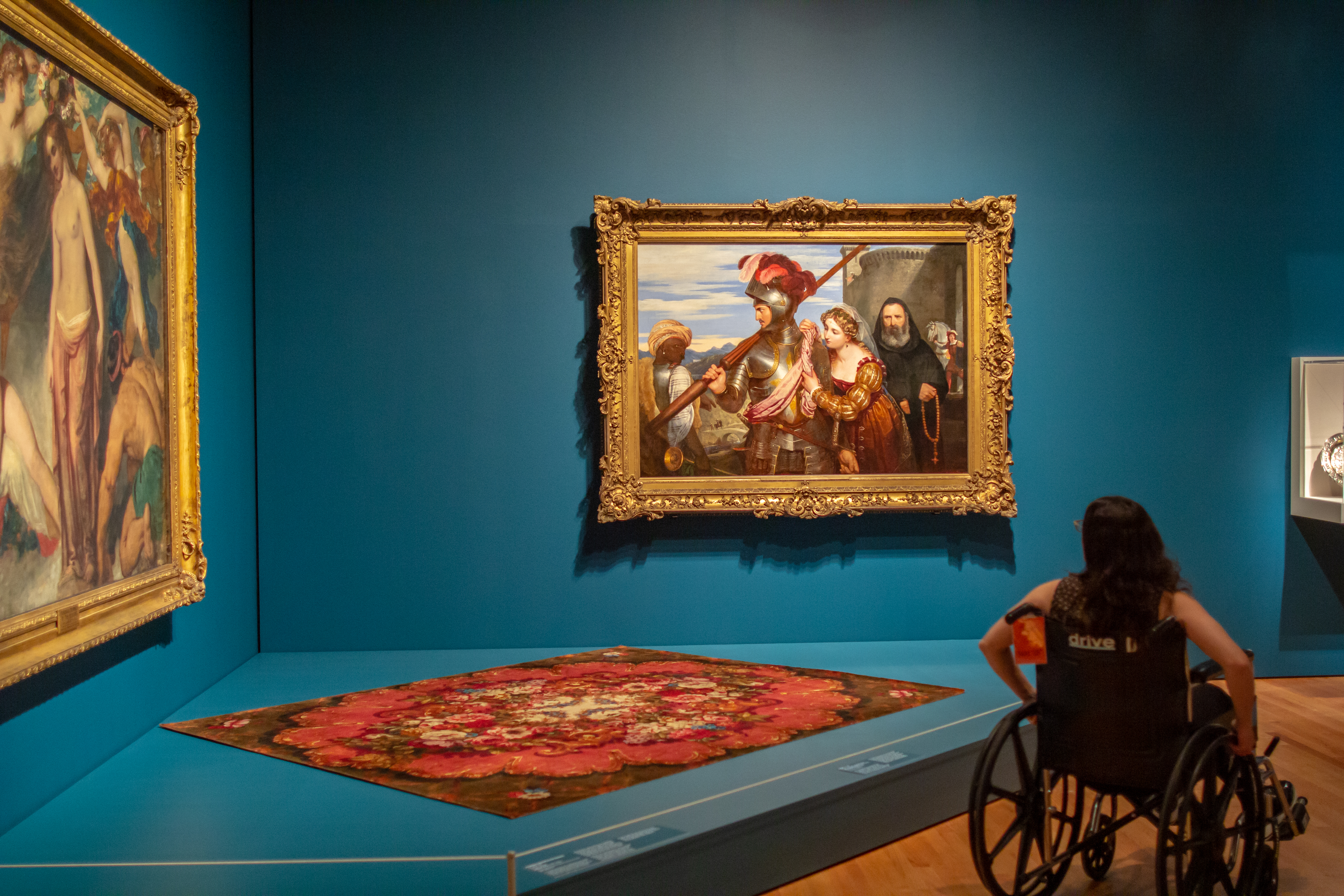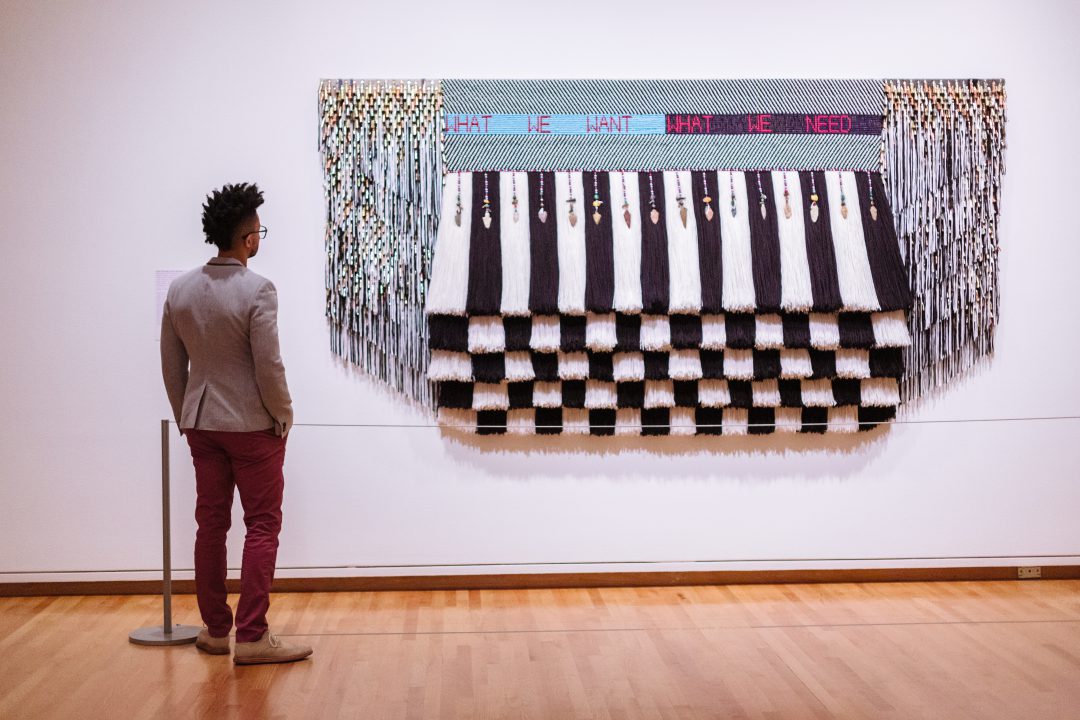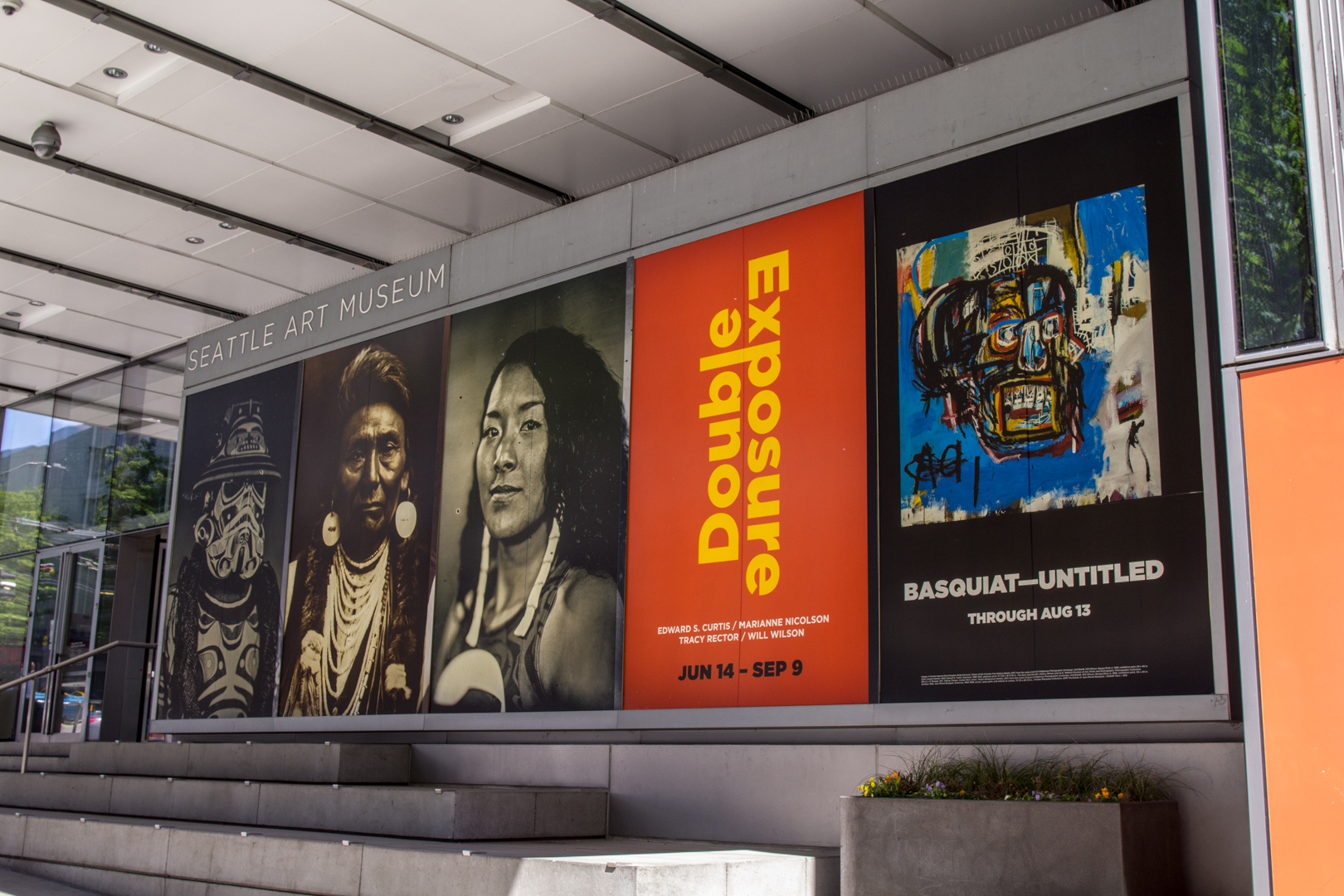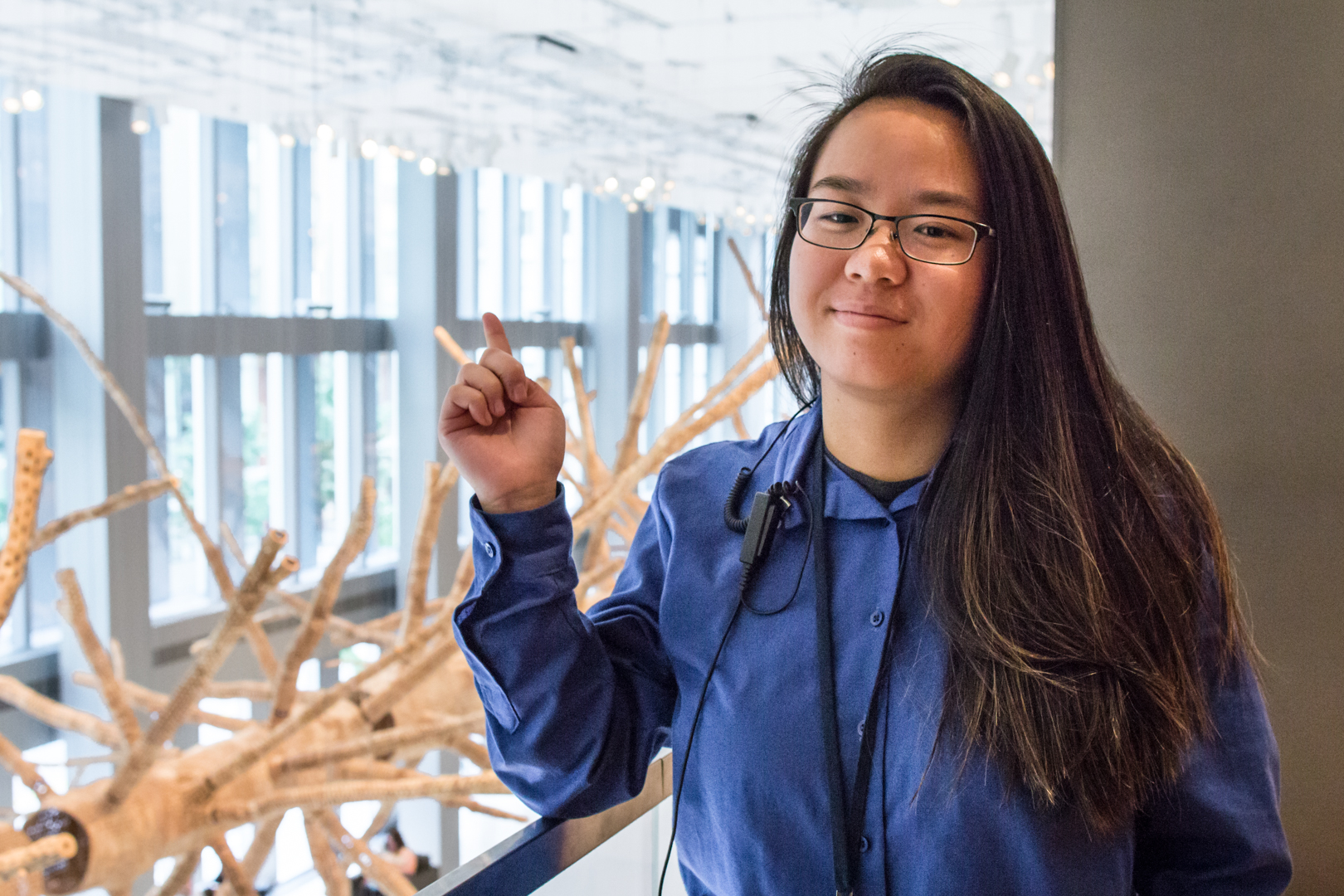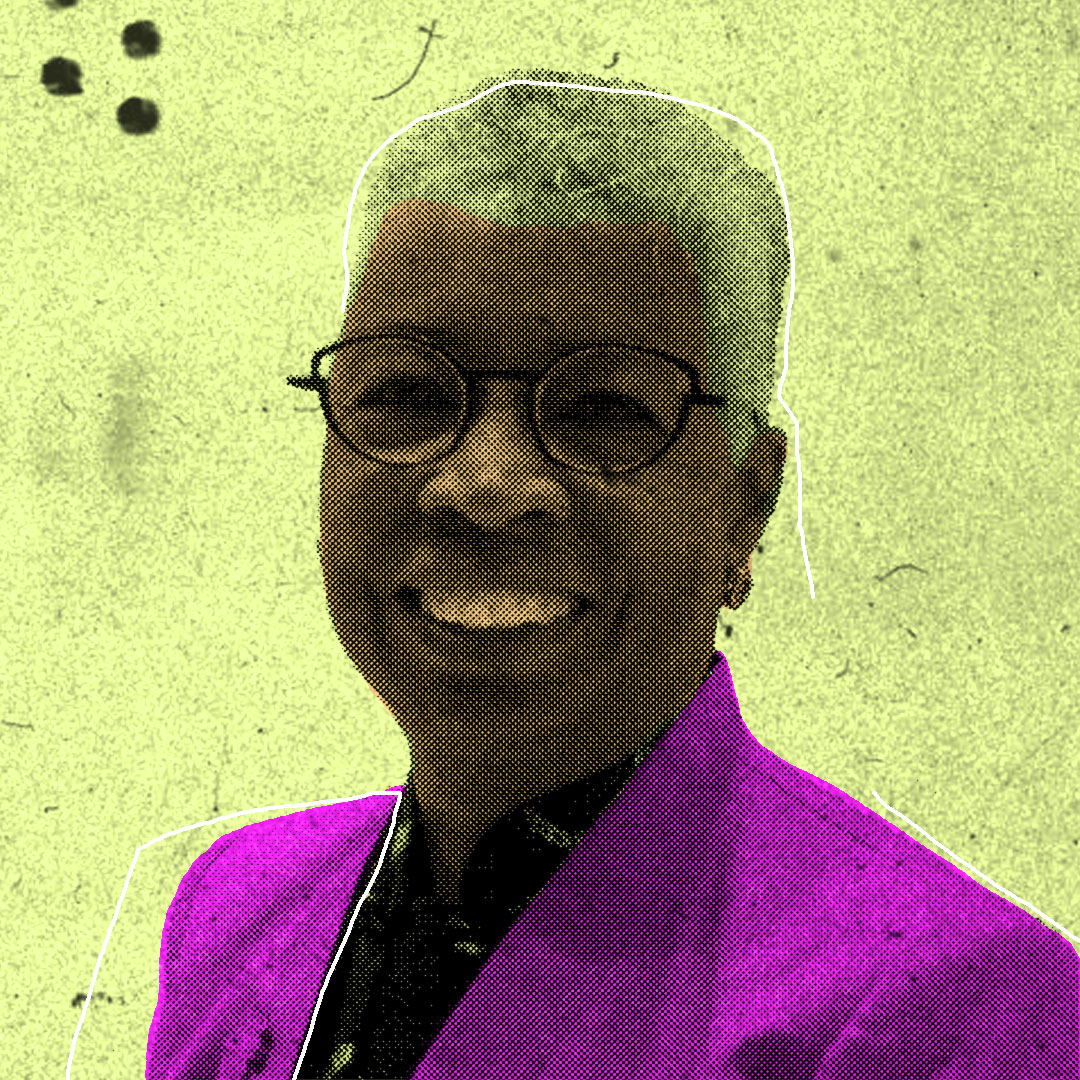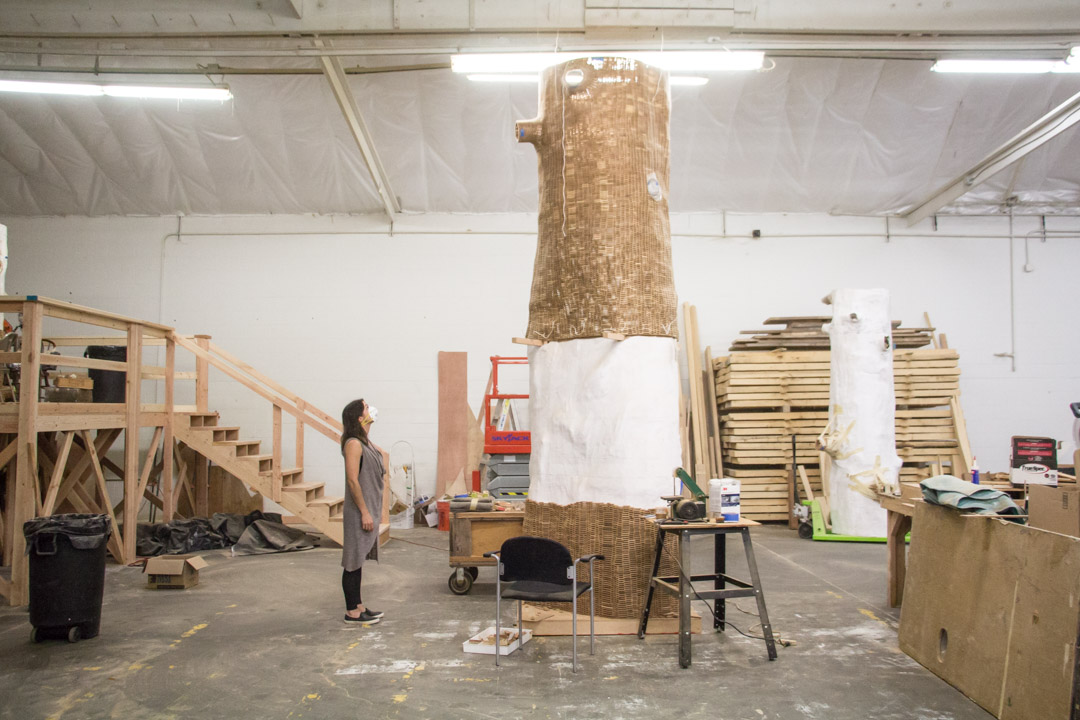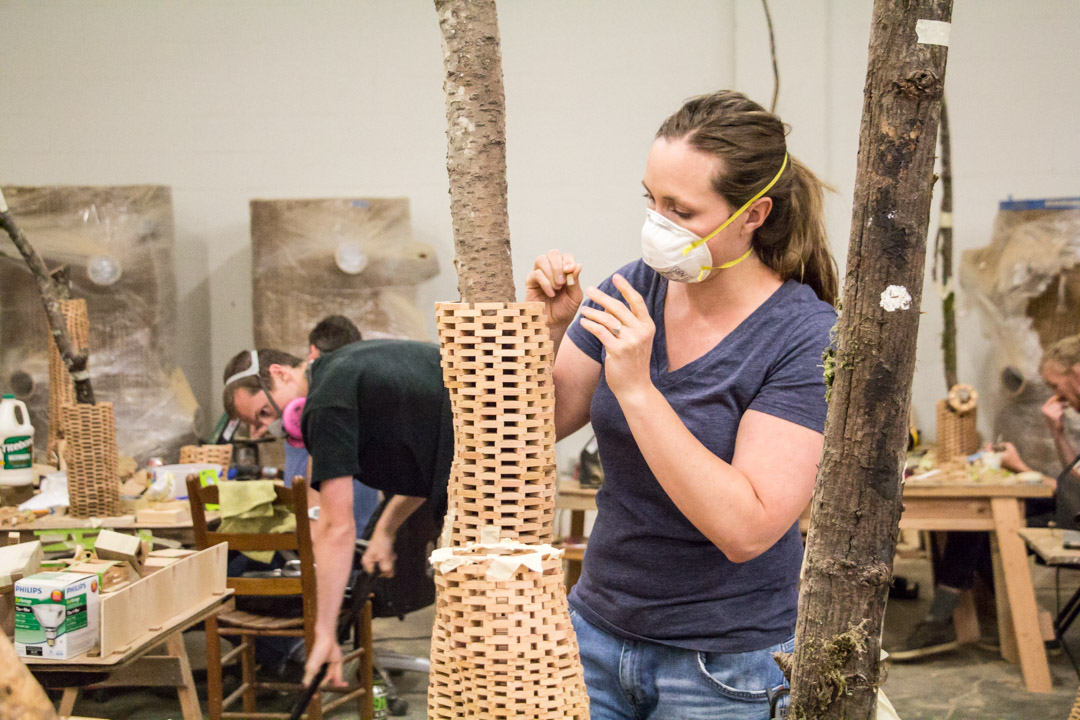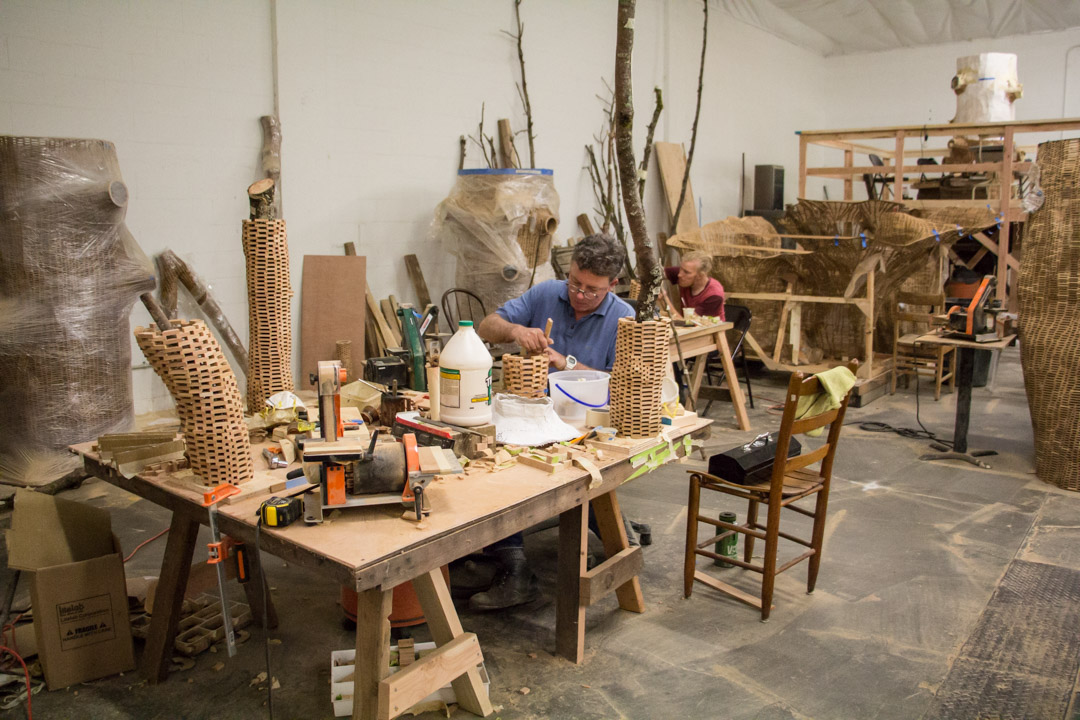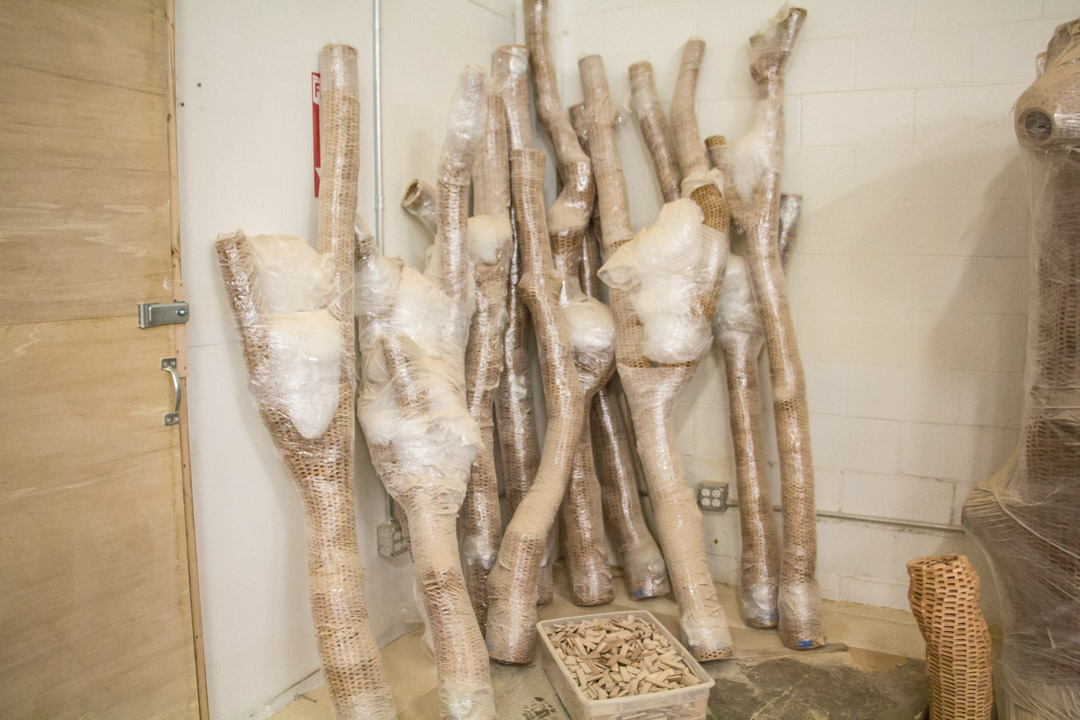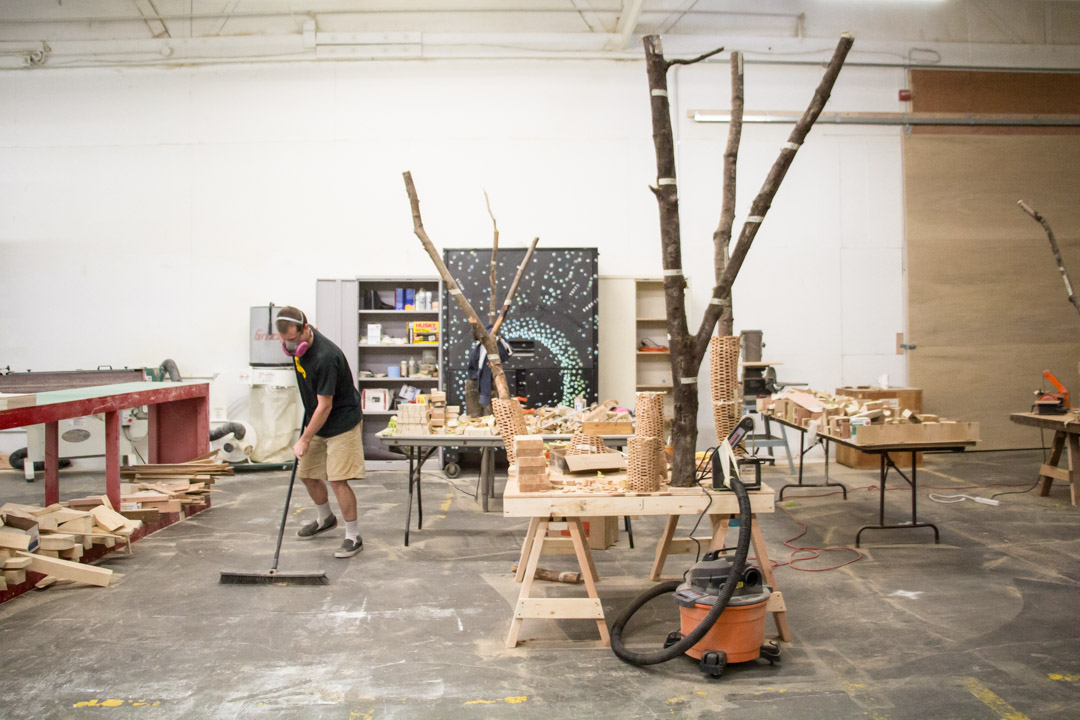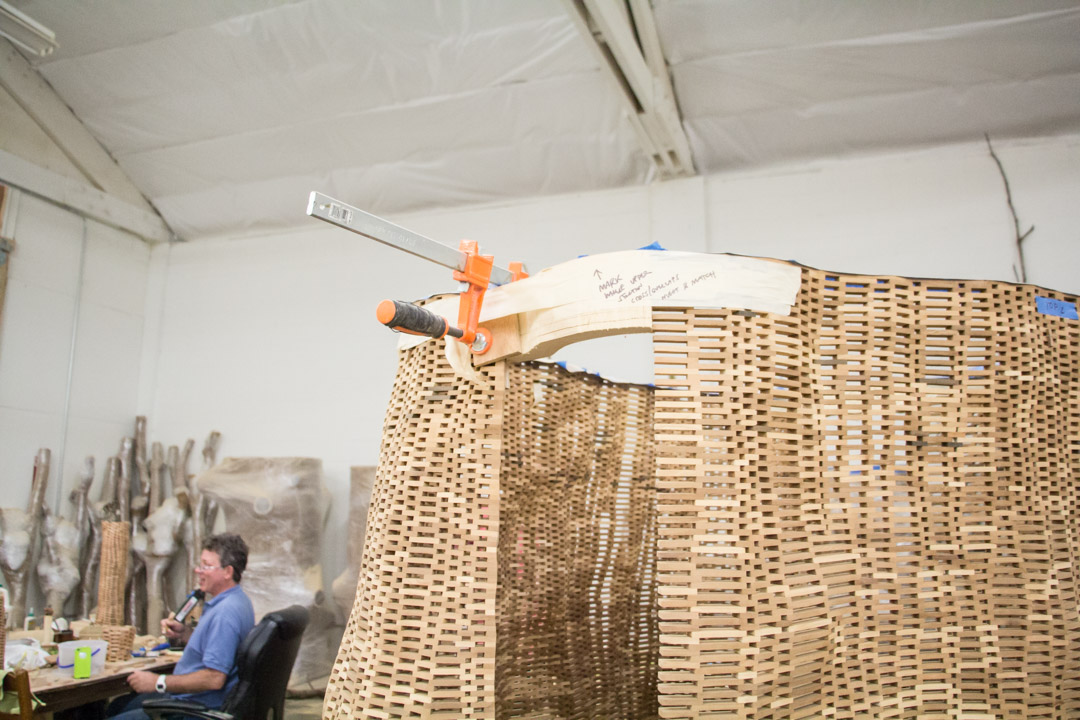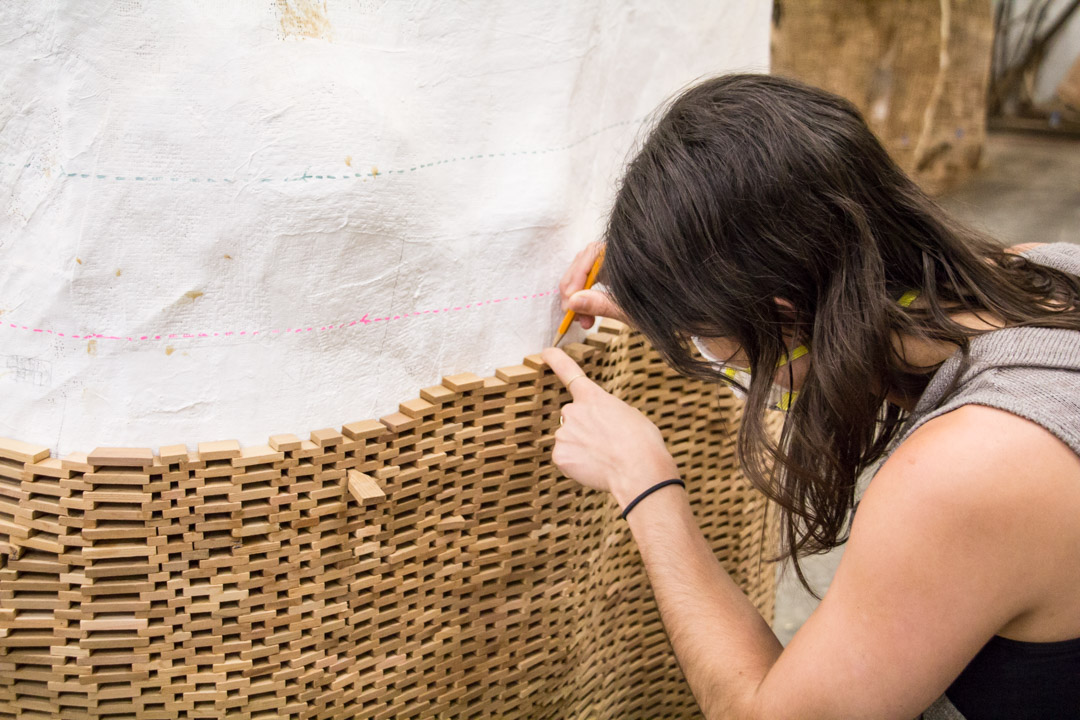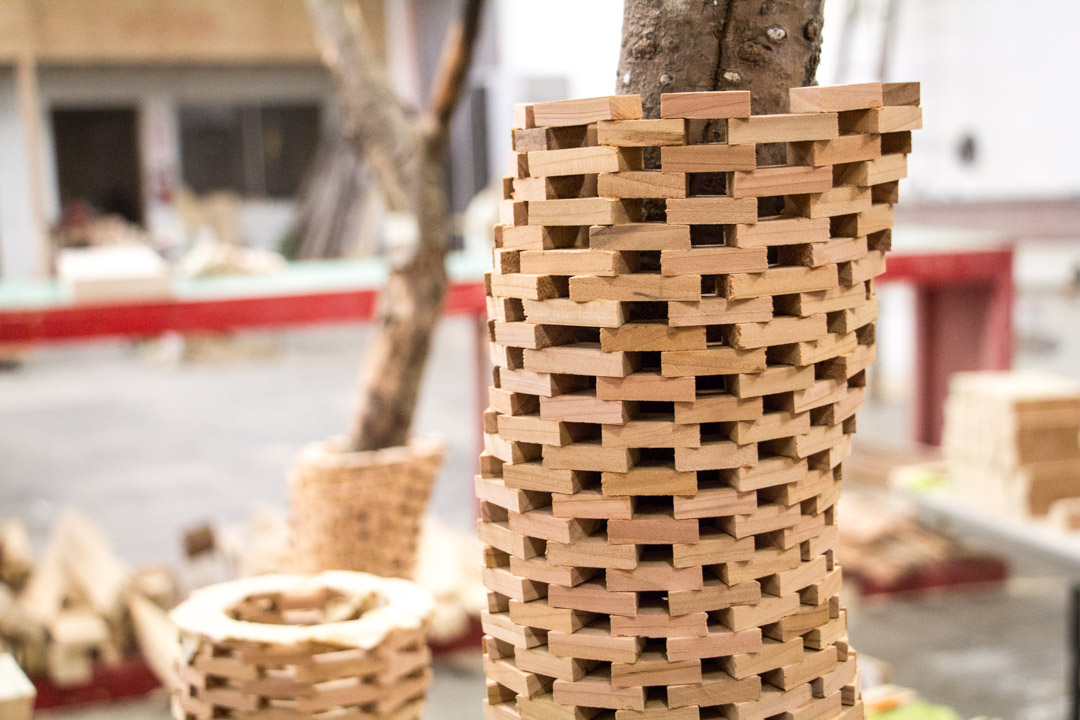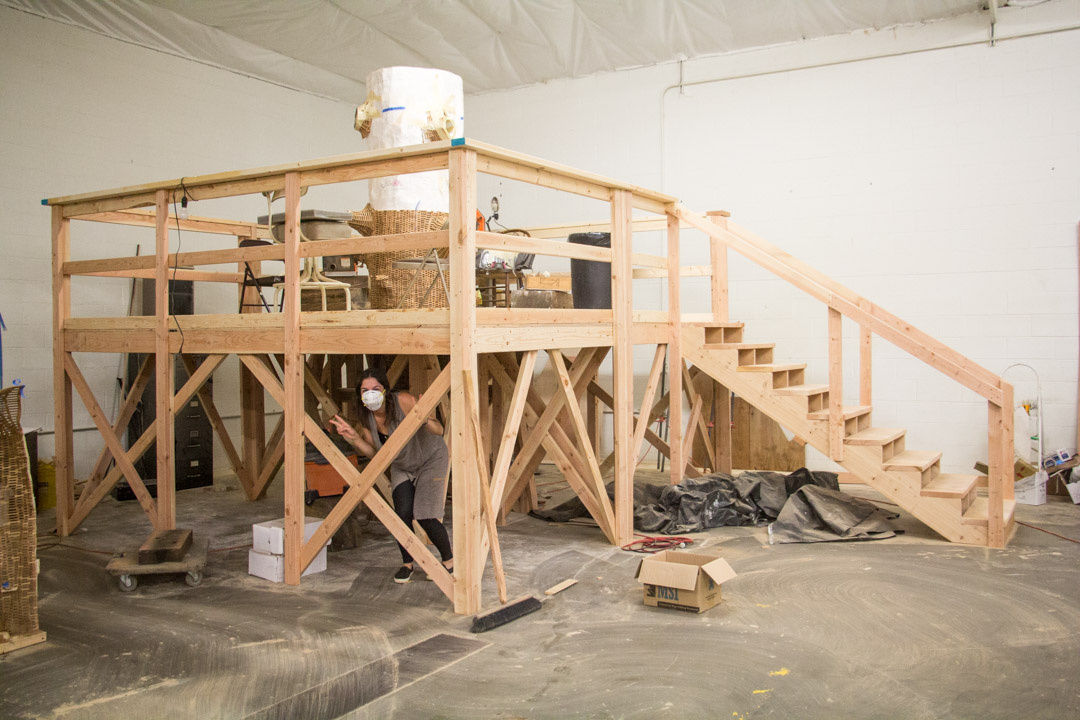Make Like a Tree: It’s Time to Say Goodbye to John Grade’s Middle Fork
Since February 10, 2017, a dynamic, 105-foot sculpture of a tree created by Seattle-based artist John Grade has graced the Seattle Art Museum’s main entrance lobby, greeting each visitor that walks through the doors. Recently, the museum announced that the work will be deinstalled from the Brotman Forum in early 2025 after eight years on view. The last day for visitors to experience Middle Fork at SAM is February 2, 2025. Margo Vansynghel of The Seattle Times broke the news, noting that the “beloved” artwork has welcomed more than a million visitors in its time at SAM.
The highly detailed sculpture was created by Grade, his team, and over 3,000 volunteers using a plaster cast of a 150-year-old western hemlock tree in the Cascade Mountains east of Seattle. The cast was used as a mold to assemble a new tree from nearly one million reclaimed cedar segments. Suspended horizontally from the museum’s ceiling and above the viewer, Grade’s sculpture offers a mesmerizing new perspective on a familiar form, and its collaborative energy has made it a symbol of Seattle’s arts community.
“We bid a fond farewell to Middle Fork,” says Scott Stulen, SAM’s Illsley Ball Nordstrom Director and CEO. “For the last eight years, this sculpture has inspired awe and delight in every visitor to the museum. John Grade’s deep appreciation for the interconnectedness of nature and people in the Pacific Northwest has reflected our mission to connect art to life these past years. We look forward, along with everyone else, to see the next part of its journey.”
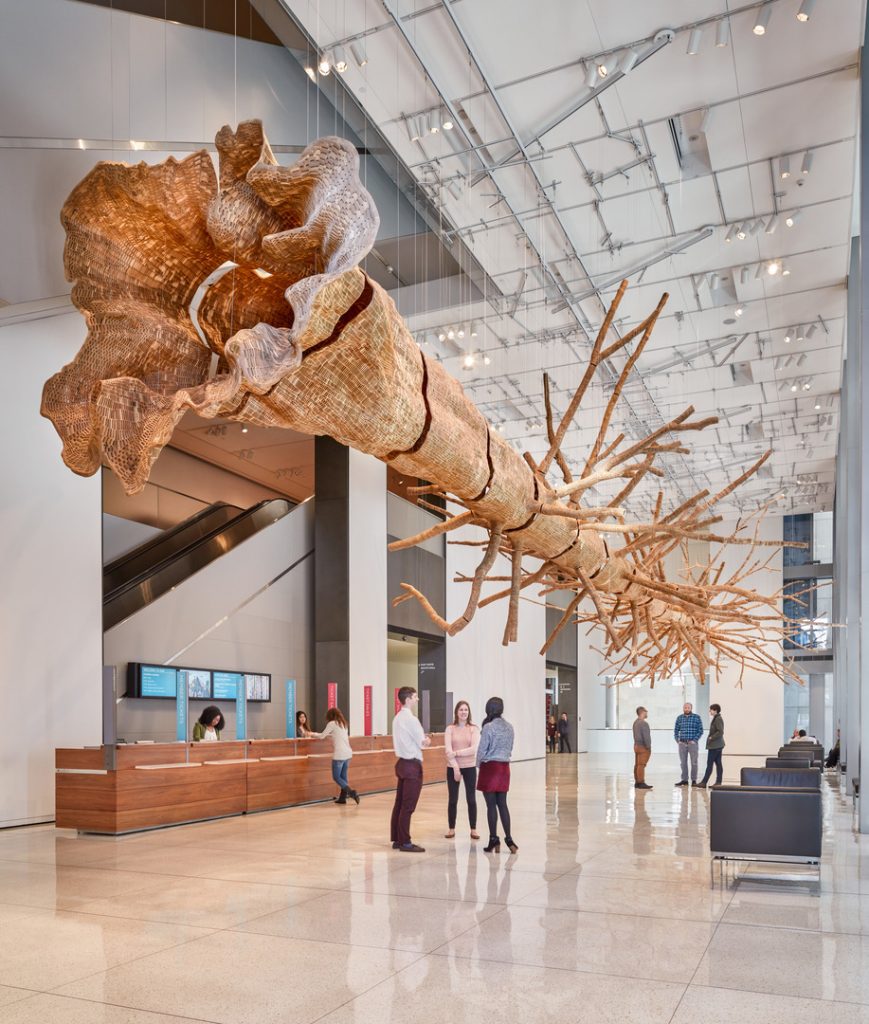
Middle Fork (2014–2017) was first conceived at MadArt Studio, a Seattle gallery from 2009–2024, and debuted there in January 2015. Following that, it was included in the WONDER exhibition at the Renwick Gallery of the Smithsonian American Art Museum in Washington, DC (November 13, 2015–May 13, 2016) and was displayed at the 2017 Davos World Economic Forum in Switzerland. At SAM, the sculpture was presented in its largest iteration yet, more than doubling from its previous length of 50 feet to 105 feet. Grade’s intention has always been to continue the sculpture’s growth to match the length of the living tree that it is based on, 140 feet. Eventually, he plans to bring the sculpture back to the forest, allowing it to decompose and return to the earth at the base of that original tree.
Middle Fork is only the second installation to make a home in the Brotman Forum. The first was Inopportune: Stage One (2004) by Chinese artist Cai Guo-Qiang. The large-scale installation featured nine Ford Taurus cars that appeared to be arrested in an animated sequence of explosions via numerous LED light tubes. It was on view at SAM as part of the expansion of its downtown building on May 5, 2007. The installation closed on January 19, 2016.
The Brotman Forum will welcome a new installation in June 2025, to be announced at a later date. From a massive tree, where do you think the museum will go next?
– Rachel Eggers, SAM’s Associate Director of Public Relations
Photos: Middle Fork, 2014–2017, John Grade, American, b. 1970, cedar, 105 ft. long x 30 ft. diameter, Seattle Art Museum commission, Photo: Ben Benschneider.

